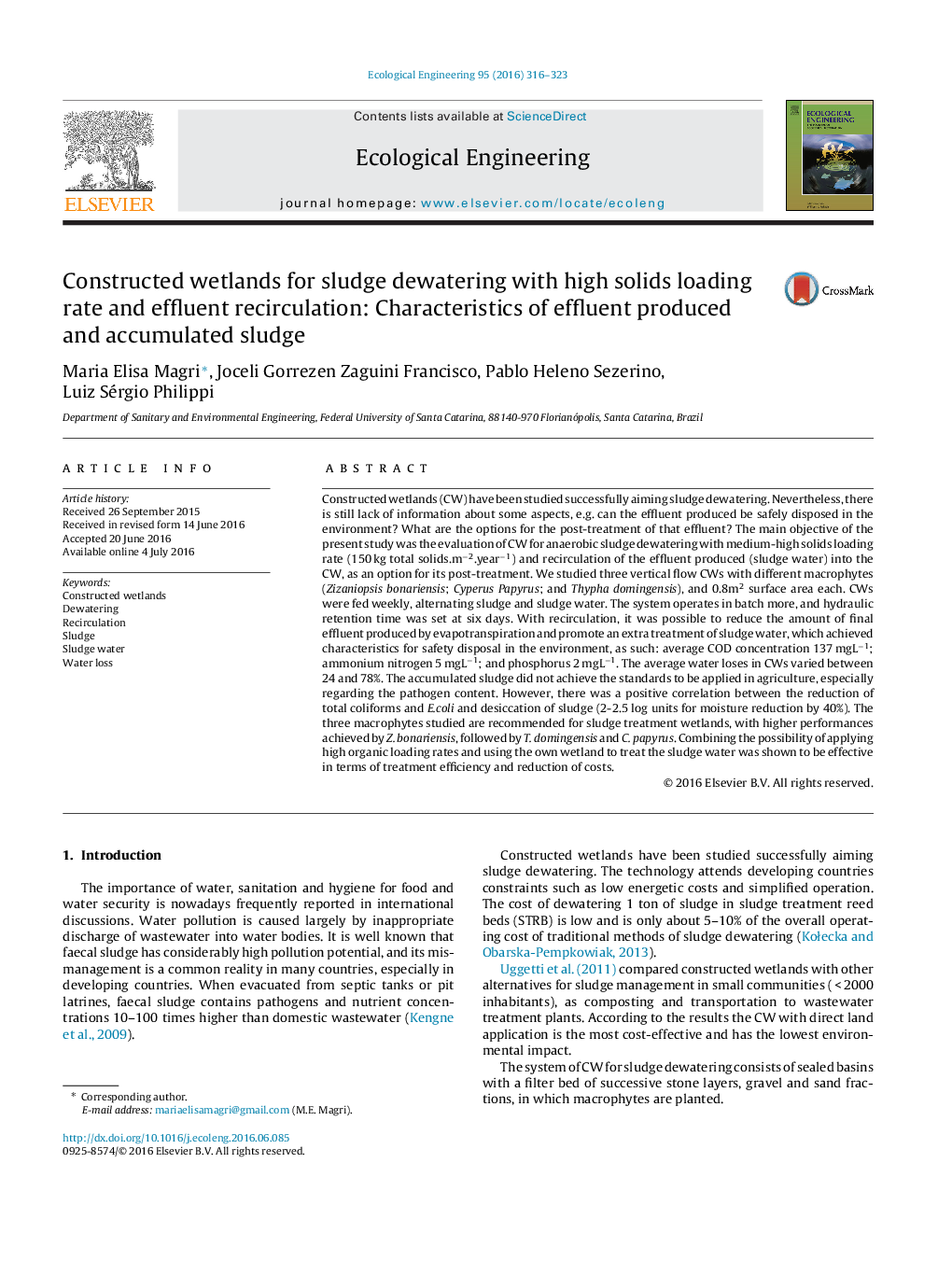| کد مقاله | کد نشریه | سال انتشار | مقاله انگلیسی | نسخه تمام متن |
|---|---|---|---|---|
| 4388456 | 1618004 | 2016 | 8 صفحه PDF | دانلود رایگان |
• We applied anaerobic sludge in 3 sludge treatment wetlands (STW) with distinctive macrophytes.
• We propose the recirculation of sludge water produced into the sludge layer as a post-treatment.
• Recirculation produced an effluent that can be safely disposed in the environment, with low COD, N and P.
• The 3 macrophytes are recommended for STW since promoted good dewatering, organic matter and nutrients removal.
• The operation conditions have led to high water losses, what is an advantage since less effluent needs to be treated/discharged.
Constructed wetlands (CW) have been studied successfully aiming sludge dewatering. Nevertheless, there is still lack of information about some aspects, e.g. can the effluent produced be safely disposed in the environment? What are the options for the post-treatment of that effluent? The main objective of the present study was the evaluation of CW for anaerobic sludge dewatering with medium-high solids loading rate (150 kg total solids.m−2.year−1) and recirculation of the effluent produced (sludge water) into the CW, as an option for its post-treatment. We studied three vertical flow CWs with different macrophytes (Zizaniopsis bonariensis; Cyperus Papyrus; and Thypha domingensis), and 0.8m2 surface area each. CWs were fed weekly, alternating sludge and sludge water. The system operates in batch more, and hydraulic retention time was set at six days. With recirculation, it was possible to reduce the amount of final effluent produced by evapotranspiration and promote an extra treatment of sludge water, which achieved characteristics for safety disposal in the environment, as such: average COD concentration 137 mgL−1; ammonium nitrogen 5 mgL−1; and phosphorus 2 mgL−1. The average water loses in CWs varied between 24 and 78%. The accumulated sludge did not achieve the standards to be applied in agriculture, especially regarding the pathogen content. However, there was a positive correlation between the reduction of total coliforms and E.coli and desiccation of sludge (2-2.5 log units for moisture reduction by 40%). The three macrophytes studied are recommended for sludge treatment wetlands, with higher performances achieved by Z. bonariensis, followed by T. domingensis and C. papyrus. Combining the possibility of applying high organic loading rates and using the own wetland to treat the sludge water was shown to be effective in terms of treatment efficiency and reduction of costs.
Figure optionsDownload as PowerPoint slide
Journal: Ecological Engineering - Volume 95, October 2016, Pages 316–323
